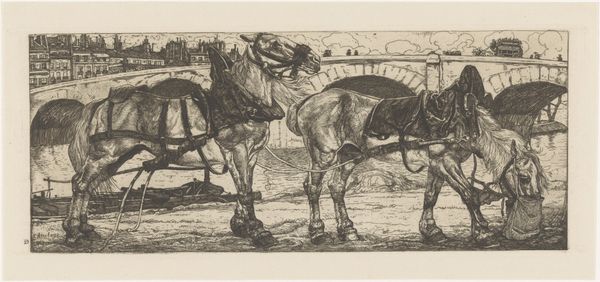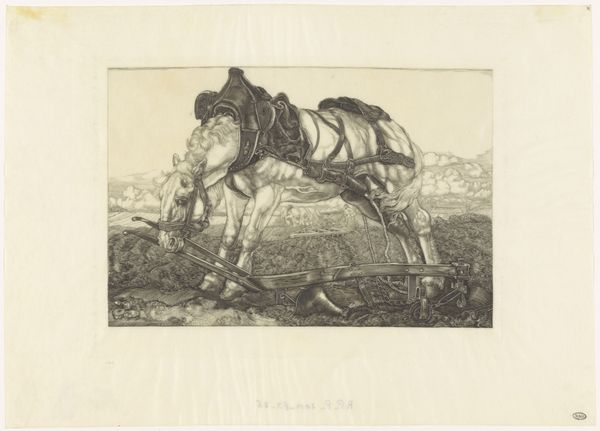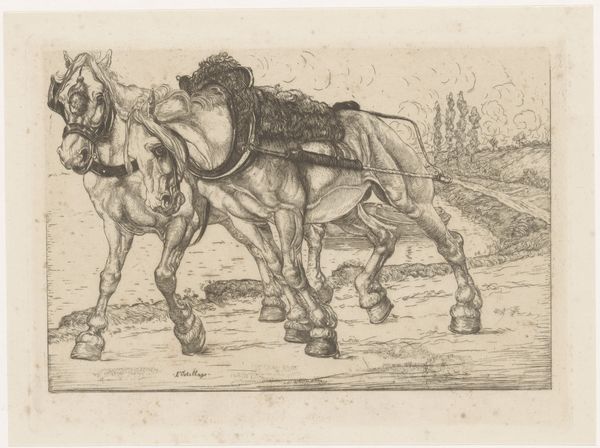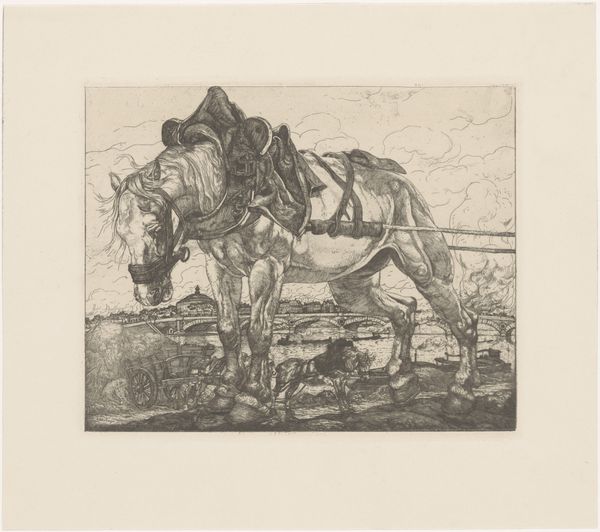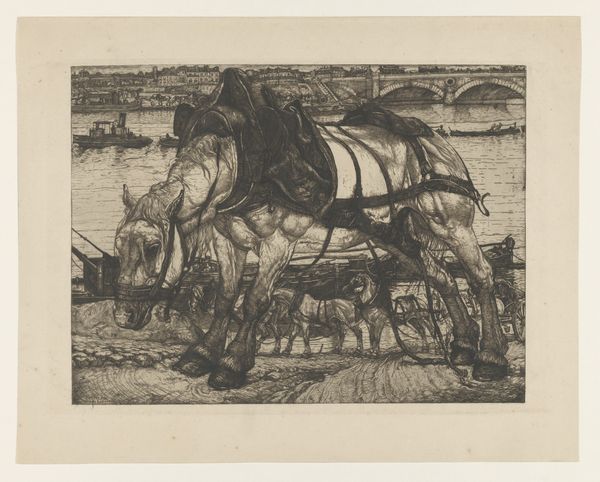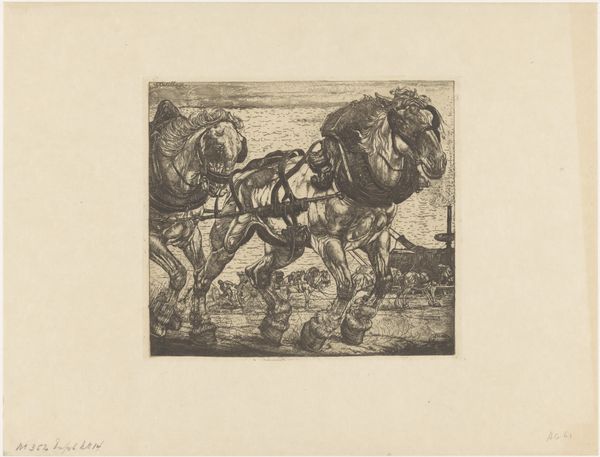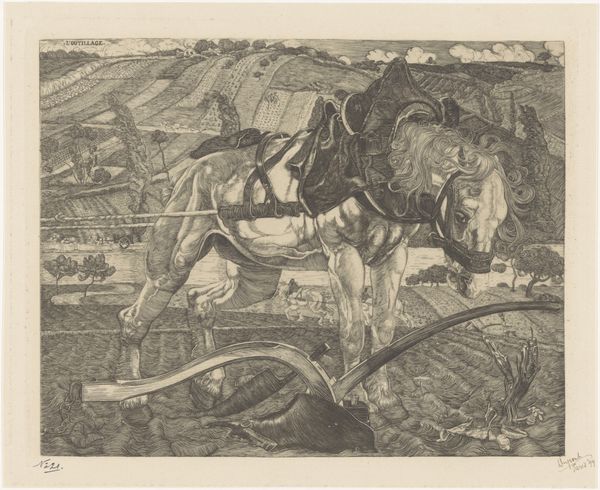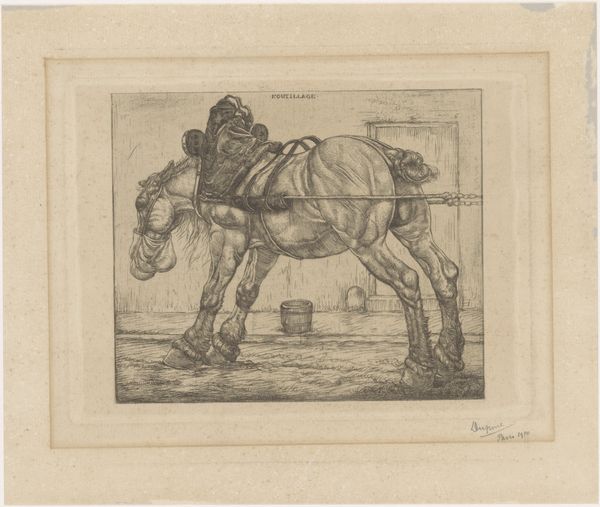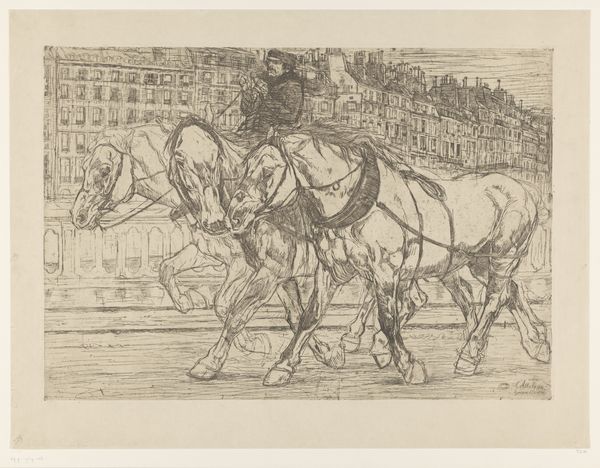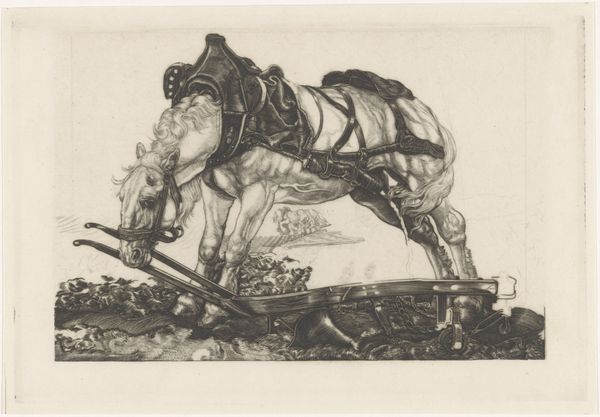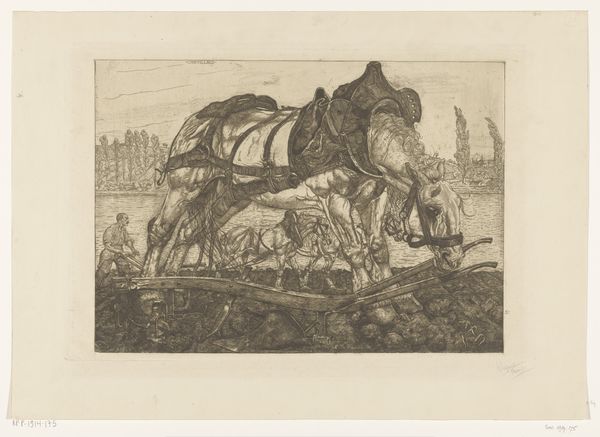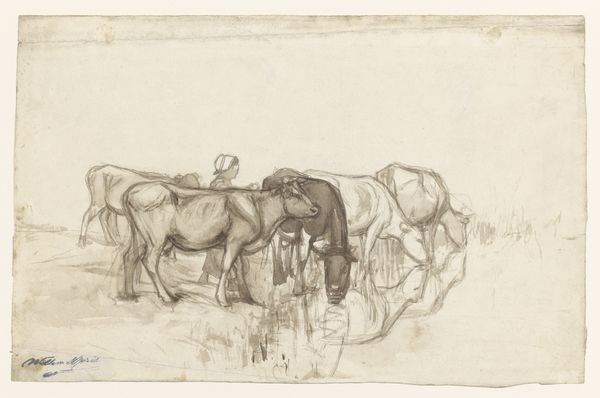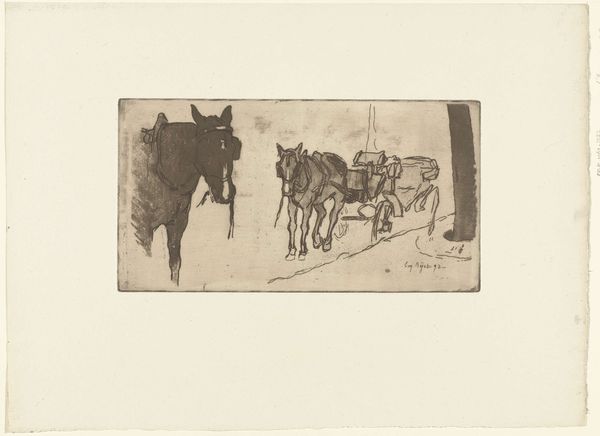
drawing, etching, pencil, engraving
#
drawing
#
toned paper
#
light pencil work
#
pen sketch
#
etching
#
pencil sketch
#
landscape
#
personal sketchbook
#
ink drawing experimentation
#
pen-ink sketch
#
pencil
#
horse
#
sketchbook drawing
#
pencil work
#
sketchbook art
#
engraving
#
realism
Dimensions: height 180 mm, width 318 mm
Copyright: Rijks Museum: Open Domain
Curator: Here we have Pieter Dupont’s "Trekpaard voor een kar," or "Draft Horse before a Cart," created in 1899. This work, executed as an etching and engraving, offers a fascinating glimpse into rural life at the turn of the century. Editor: The first impression I get is one of strained effort. The entire composition, from the horse’s posture to the straining lines, emphasizes the labor involved. It’s a compelling, if somewhat somber, scene. Curator: Absolutely. Dupont was deeply interested in portraying the everyday struggles of working-class individuals. The etching process itself, with its inherent linearity and reliance on physical pressure to transfer the image, mirrors the strenuous exertion depicted in the artwork. Note how Dupont varies his marks; using denser lines to articulate the horse's musculature versus the lighter treatment for the sky, drawing our attention to labor of both horse and man. Editor: Yes, I can see that now. The materiality is also very apparent – look at the horse harness that presses and rubs its body; those straps and fasteners, so important for understanding this form. Dupont highlights the very physical and manufactured aspect of animal power in 19th-century economies. Even in the subtle textures achieved with the etching, it's not simply a visual depiction; it speaks to the lived experiences of the individuals dependent on these draft animals. Curator: Precisely. It’s worth noting how Dupont would have acquired these etching plates, acids, and specialized tools. These materials themselves represent industrial advancements that were rapidly transforming society and art production in the late 1890s. One can further examine similar studies in his personal sketchbooks from this time. It offers us a layered view of a world reliant on animal labor, where art materials became increasingly commodified and available. Editor: That gives the piece another dimension. The subject is work and labor, and even the artistic processes behind the art point toward those very things! Even down to how Dupont employs realism within a landscape genre, drawing you toward specific compositional arrangement that adds to that feeling of heaviness. I find the almost muted grey-toned coloring, for example, accentuates this overall sense of burden within its structured form. Curator: In conclusion, what might seem like a simple sketch on first glance turns out to be loaded with meaning when we examine the materiality and production. Editor: And on a final note, thinking of both form and substance, you end up sensing a kind of stark beauty, one built on observation, utility, and work.
Comments
No comments
Be the first to comment and join the conversation on the ultimate creative platform.

